Home » Horticulture » Romaine Calm and Garden On » Module 1: Choosing the right site and varieties
Module 1: Choosing the right site and varieties
Learn how to choose your garden location and how to select the best cultivars for your situation.
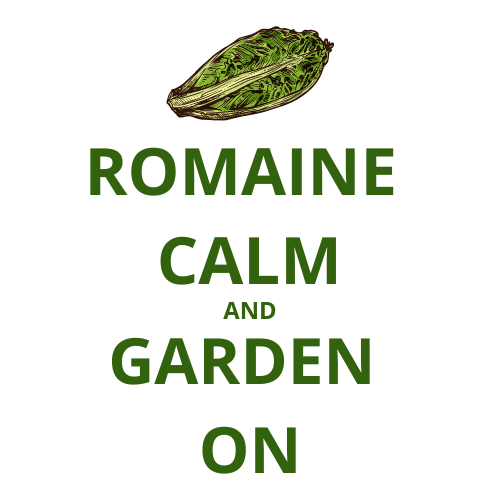
At the end of this lesson, you’ll be able to:
- List and describe considerations when preparing a vegetable garden and selection plants
- Distinguish vegetable classification by season of planting/growth
- Define the vegetable planting techniques of succession and sequential planting
- Identify steps to preparing a planting bed
Where should you site a garden?
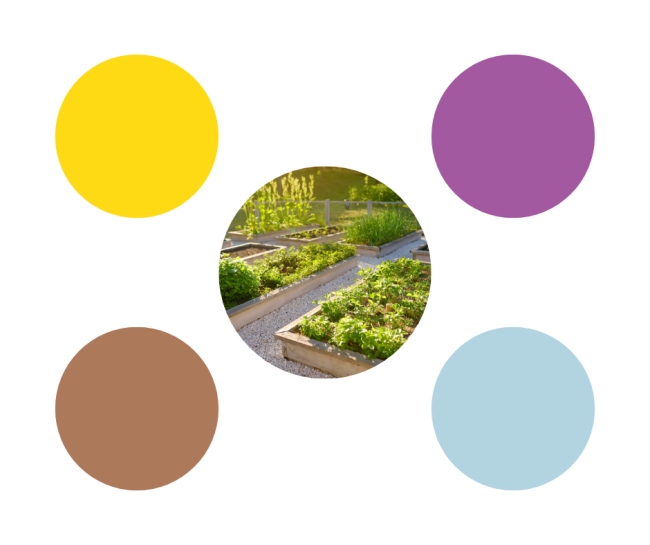
When selecting where to locate a garden, you’ll want to keep these four considerations in mind.
Light
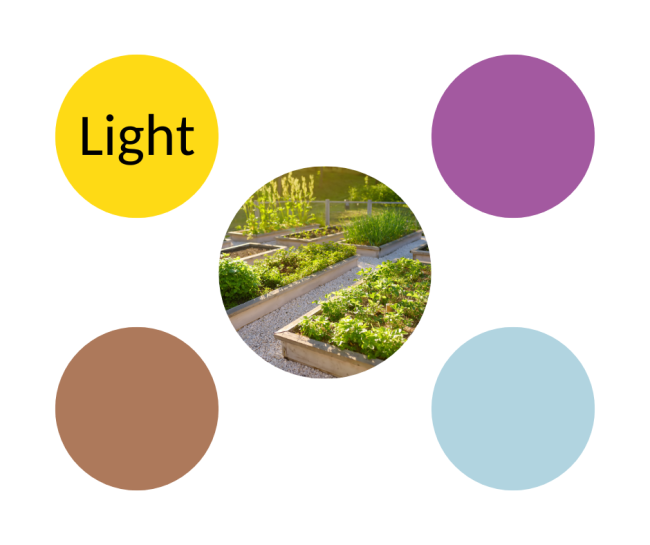
- Look for a location that is south facing. You will need at least 6+ hours per day.
- The quality of the light changes throughout the day. The most intense sun is from 10am to 2pm. This means that if you have 6 hours of sun per day, but it is from 6-9am and 4-7pm, it will not be as strong as 8-2pm.
Soil texture
- Soils with high clay content drain poorly.
- Sandy soils do not retain nutrients or moisture well.
- Both soils can be amended by adding compost. Adding compost to heavy clay soils improves drainage. Adding compost to sandy soils improves the soil’s ability to retain moisture and nutrients.
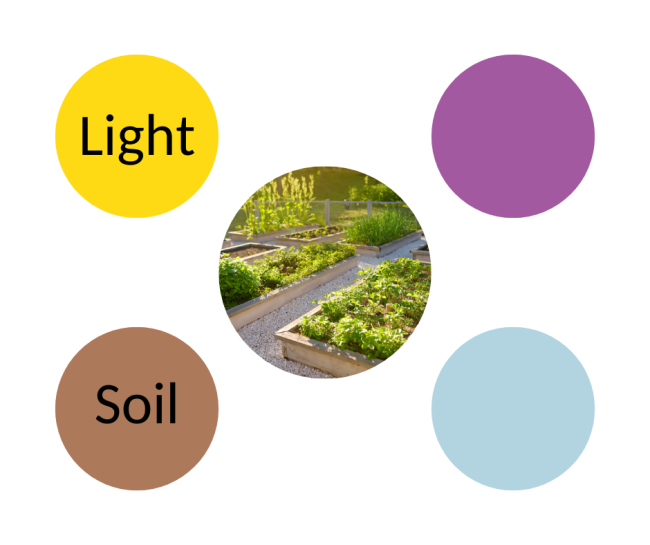
The surrounding area
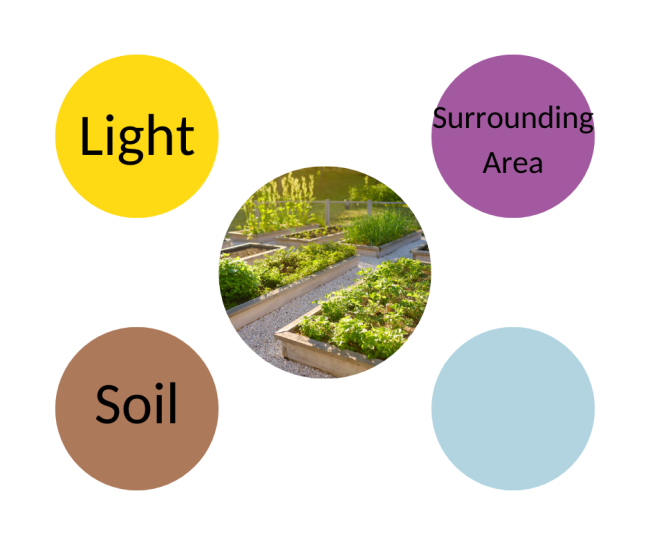
- You will want to pay attention to the surrounding area.
- Trees and shrubs can block sunlight, and they can compete for moisture and nutrients.
- How is the airflow? Nice and breezy? Strong prevailing winds? No airflow at all?
- How is the general topography? Low spots with poor drainage?
Access
- Do you have access to water?
- Is the location convenient? Can you easily get to the garden site?
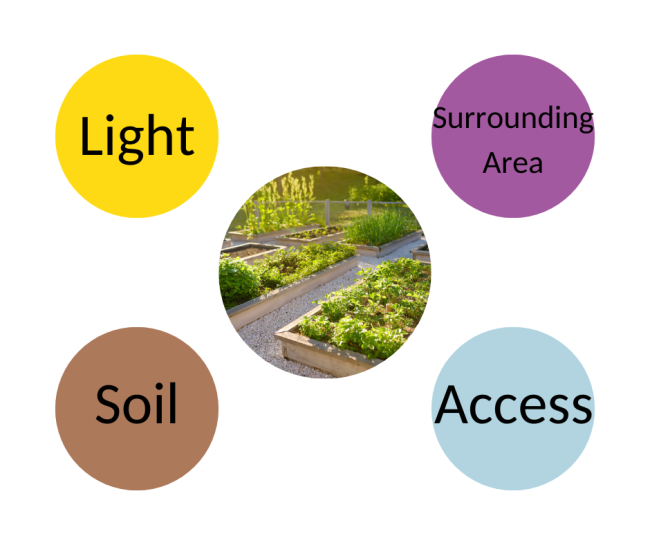
What vegetables should you grow?
Narrow down your list of crops by keeping these questions in mind.
What would you like to eat
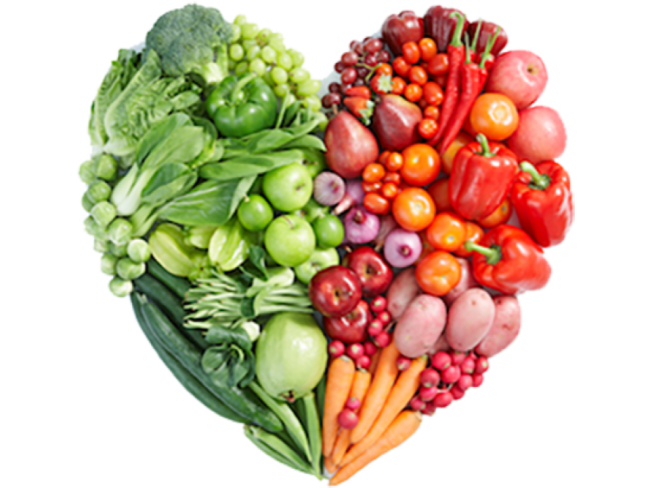
Choose crops you know you will eat.
Write a list of 4-6 crops you think you’d like to grow. For example I like to eat tomatoes, chili peppers, green beans and cucumbers. My family won’t eat beets, so it wouldn’t make sense for me to grow them.
What is realistic?

Choose crops that will grow within the space you have available and Wisconsin’s short growing season.
How much space will your vegetables need? Take a look at the planting guide for central Wisconsin gardens. There are columns with spacing between plants and footprint in inches. Use this to estimate how much space you will need to grow your crops. Be aware, these are general estimates. You may find cultivars that take more or less space than these estimates.
Is it cost effective?

Choose cost effective crops if space is limited.
Some veggies have a huge footprint in the garden compared to their value. For example, a single pumpkin costs $3-6, but can take up to 100 square feet of space.
Not as much ‘bang for your buck’ as you’d get if you planted radishes, bush beans, or lettuce in the same space.
You’ll get the MOST ‘bang for your buck’ when you grow herbs.
When should you plan to plant?
First you need to understand the difference between cool season crops and warm season crops. Then you can apply successive and sequential planting techniques to get the most harvest from your garden space.
Cool season crops can tolerate frost. Warm season crops must be planted after the danger of frost has passed.
| Cool | Cool | Warm | Warm |
| Beet | Broccoli | Corn | Squash |
| Peas | Salad Greens | Cucumber | Beans |
| Carrots | Radish | Tomato | Pepper |
| Cabbage | Turnip | Eggplant | Okra |
| Onions | Lettuce | Pumpkin | Melons |
- When considering which crops to grow, remember there is more than one growing season. You’ll need to grow cool season crops earlier in the spring or later in the fall.
- Cool crops prefer cooler growing temperatures and can tolerate some frost. Some cool crops will bolt when the temperatures are too warm, or will refuse to germinate if the soil is too warm. Bolting happens when a plant goes to flower. Leafy often become very bitter once they bolt.
- Warm season crops will not tolerate frost. We must wait until after all danger of frost has passed to plant these crops.
- In Wausau, the last typical frost is May 14th. The first typical frost is Sept 28 and the growing season is “typically” 136 days. This will vary from year to year.
- Remember late summer is a great time to plant for fall cool season crops. Fall peas, spinach, etc.
If you plan ahead, you can stretch your harvest over a longer period of time.
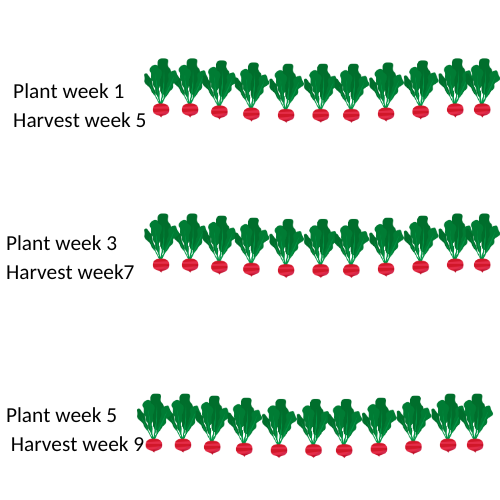
Successive planting is a planting technique for crops that have a very quick period from seed to harvest. Radishes (21-35 days), lettuce (30+ days), bush beans (50-60 days) are all good choices for successive planting. For example, with radishes you may want to plant a row on week one, week three, and week 5. This way you spread the harvest over a longer period of time.
Sequential planting is when you replace an early season crop with a late season crop. You can replace peas, which are a cool season crop that is planted in the spring, with kale later in the season once the peas have stopped producing.
Here is a helpful article from UMN Extension with more details on succession and sequential planting.
Choosing specific varieties- what do you need to think about?
There are many, many varieties of each vegetable crop. These tips will help you select which cultivars (cultivated, or named varieties) of vegetables you should plant, depending on your situation.
Choose bush, determinate, or compact cultivars if space is limited.
- Short on space? Could you add a container or two near a doorway?With limited space, smaller varieties will reduce disease pressure.
The description of small varieties will often include words like “compact” or “bush” for vining crops (cucumbers, beans, squash, zucchini, watermelon, and pumpkins.- Tomatoes use the terms determinate and indeterminate. Determinate tomatoes are “bush” varieties and do better in small spaces.
For crops with a long growing season, choose cultivars with shorter days to harvest.
For crops with longer growing times, choose cultivars with shorter days to harvest. These will be warm season crops like tomatoes, watermelons, and squash. For example, you may want to choose Early Girl Tomato (55 days) compared with Cherokee Purple Tomato (90 days).
Select disease resistant varieties if you have had disease issues in the past.
If you have had disease issues in the past, choose a disease resistant variety. Here’s a list from Cornell of disease resistant vegetable varieties. Keep in mind, you’ll need positive identification of the disease you have dealt with in the past to properly choose a resistant variety.
Homework
Use this blank planning worksheet to create a garden plan.
Resources
Check out these free resources for even more information!
The Vegetable Garden
Cultivars for Wisconsin Gardens
Container Gardening
Common Crops for Community Gardens (Discusses cool season vs warm season crops)




